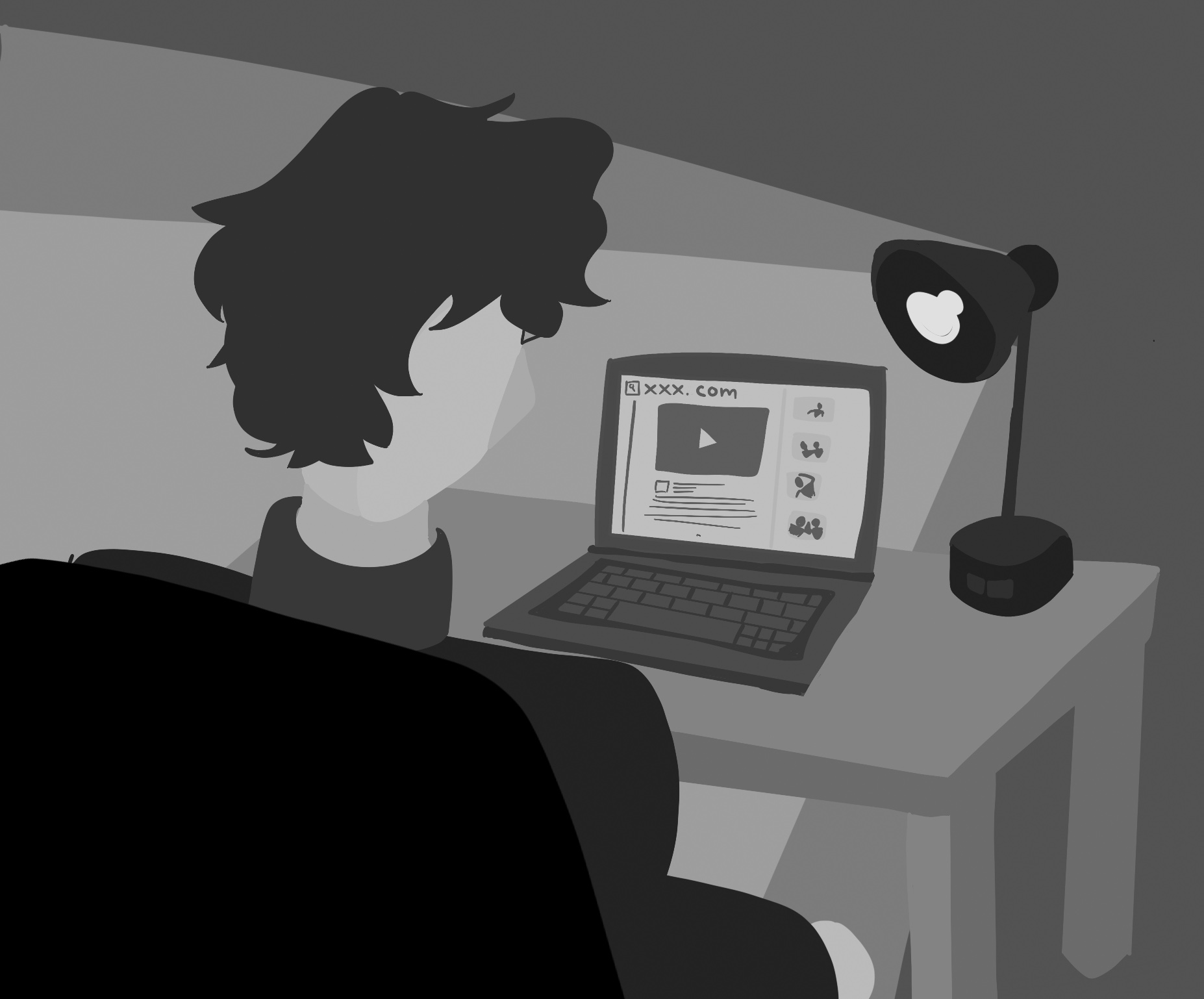Trick or treat: how pornography shapes desire
March 4, 2022
 This
piece represents the opinion of the author
.
This
piece represents the opinion of the author
.
 Zoe Becker
Zoe BeckerAs Cady Heron says in Mean Girls, “in girl world, Halloween is the one time of year a girl can dress like a total slut, and no other girl can say anything about it.”
The sexualization of Halloween has become somewhat of an unsaid expectation among celebrants, so much so that Spirit Halloween offers an online costume category called “sexy women’s Halloween costumes.” The category features their “No Rules Referee,” “Say Ahhh Nurse” and “Lieutenant Misbehave” costumes. Each of the costumes feature skin-tight fabric, large pumps and sexually suggestive props. The outfits, innuendos of mimed professions, sexualize things that aren’t inherently sexual.
This distortion of occupations is a by-product of a larger trend, dubbed “pornographization” or “porn-chic” by cultural commentators, journalists and scholars. The term refers to the escalating and pervasive public presence of pornographic iconography across a wide range of media, such as advertisements, film and music. These costumes serve as a reference to how pornography has infiltrated normal life, because the act of being a woman employed in a service job—such as a nurse or police officer—has become sexualized. This normalization of pornography threatens women’s equality because pornography promotes the diminishment of women.
The conflation of sexualization and pornographization—and the representation of these as democratized desires—suggests that pornography portrays the community’s sexual desires. In other words, pornography is equated with sex rather than a particular kind of sex.
In actuality, pornography depicts uncommon, violent sexual behavior. A group of researchers analyzed hundreds of the most popular porn scenes and found that 88.2 percent of the scenes contained physical violence or aggression while 48.7 percent contained verbal aggression. Another study estimated that nearly 40 percent of videos analyzed on Pornhub contained visible aggression or violence, while 25 percent contained verbal aggression. Additionally, another study suggested that 45.1 percent of Pornhub videos and 35 percent of videos on XVideos depicted violence or aggression. As each of these studies confirmed, women were almost always the targets of this violence.
In other words, porn is sending the message that sexual violence is just a part of sexual pleasure.
Considering that most young people are exposed to porn by age 13, pornography can be considered a teaching agent. It teaches consumers that sex is inherently violent and that men should be dominant and women should be submissive. Not only is this mindset incorrect, but it’s dangerous because it promotes brutal behavior. I encourage readers to consume media—especially porn—with a skeptical mindset. What are your desires? Are they really yours?

Comments
Before submitting a comment, please review our comment policy. Some key points from the policy: